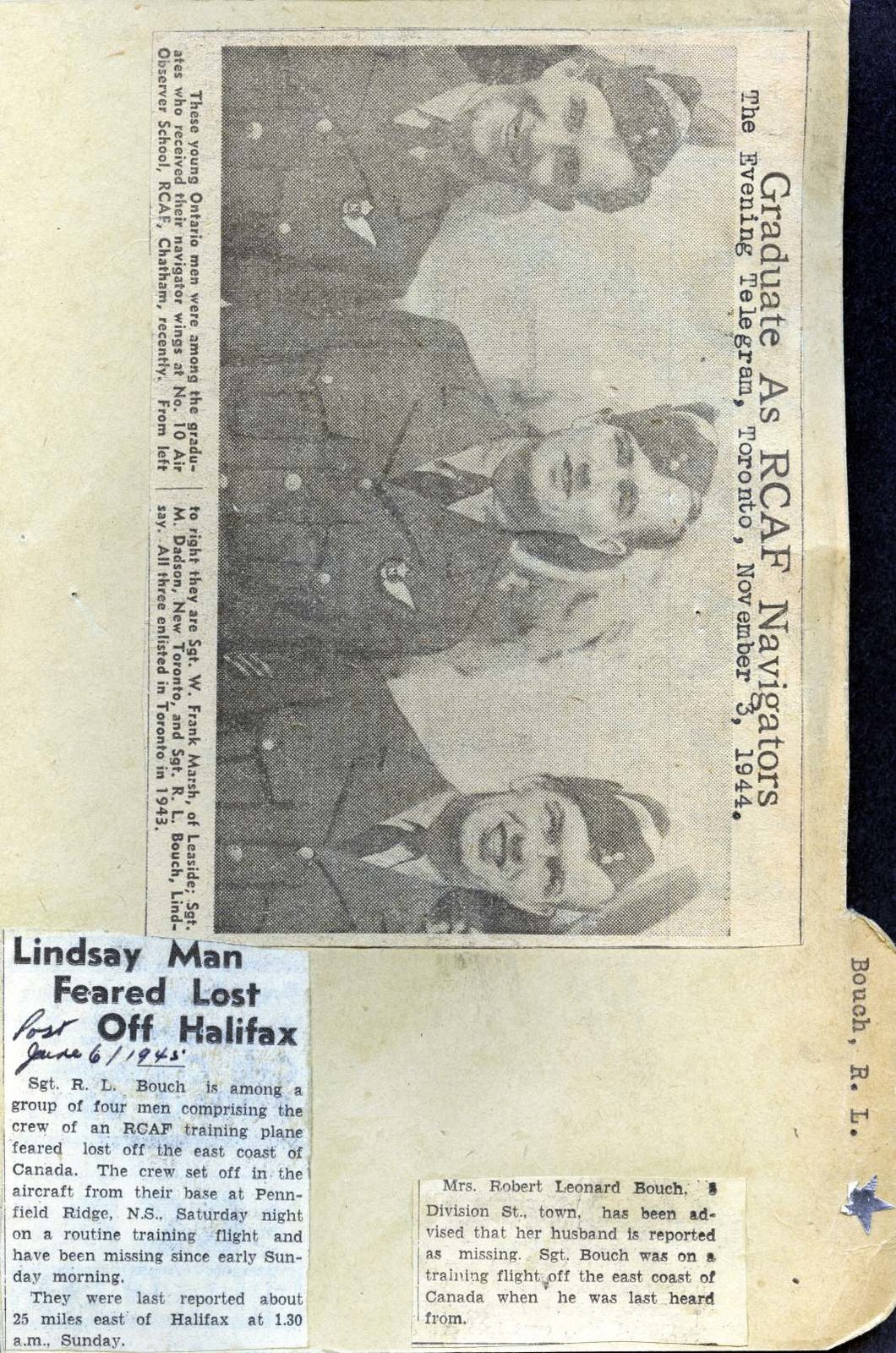
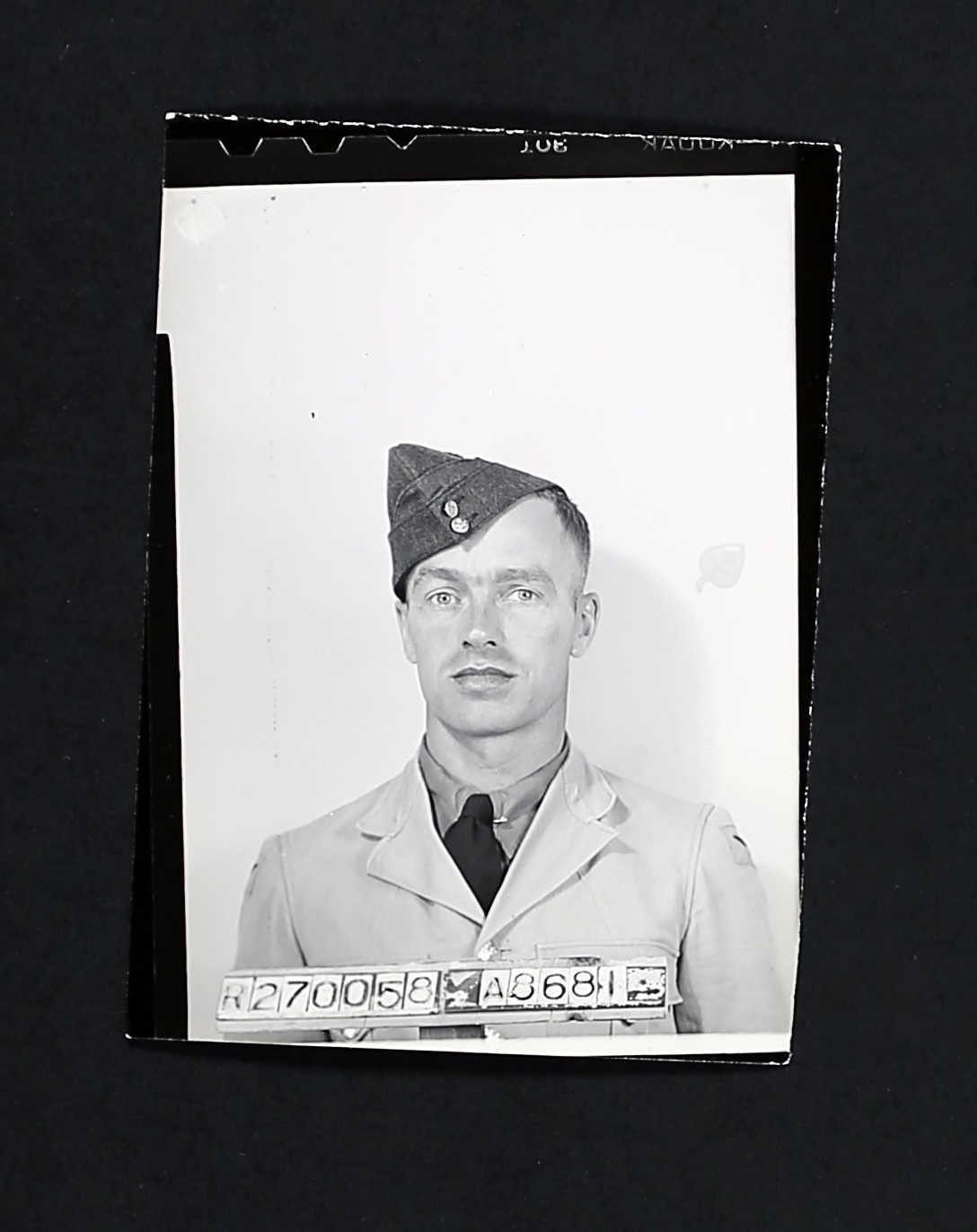
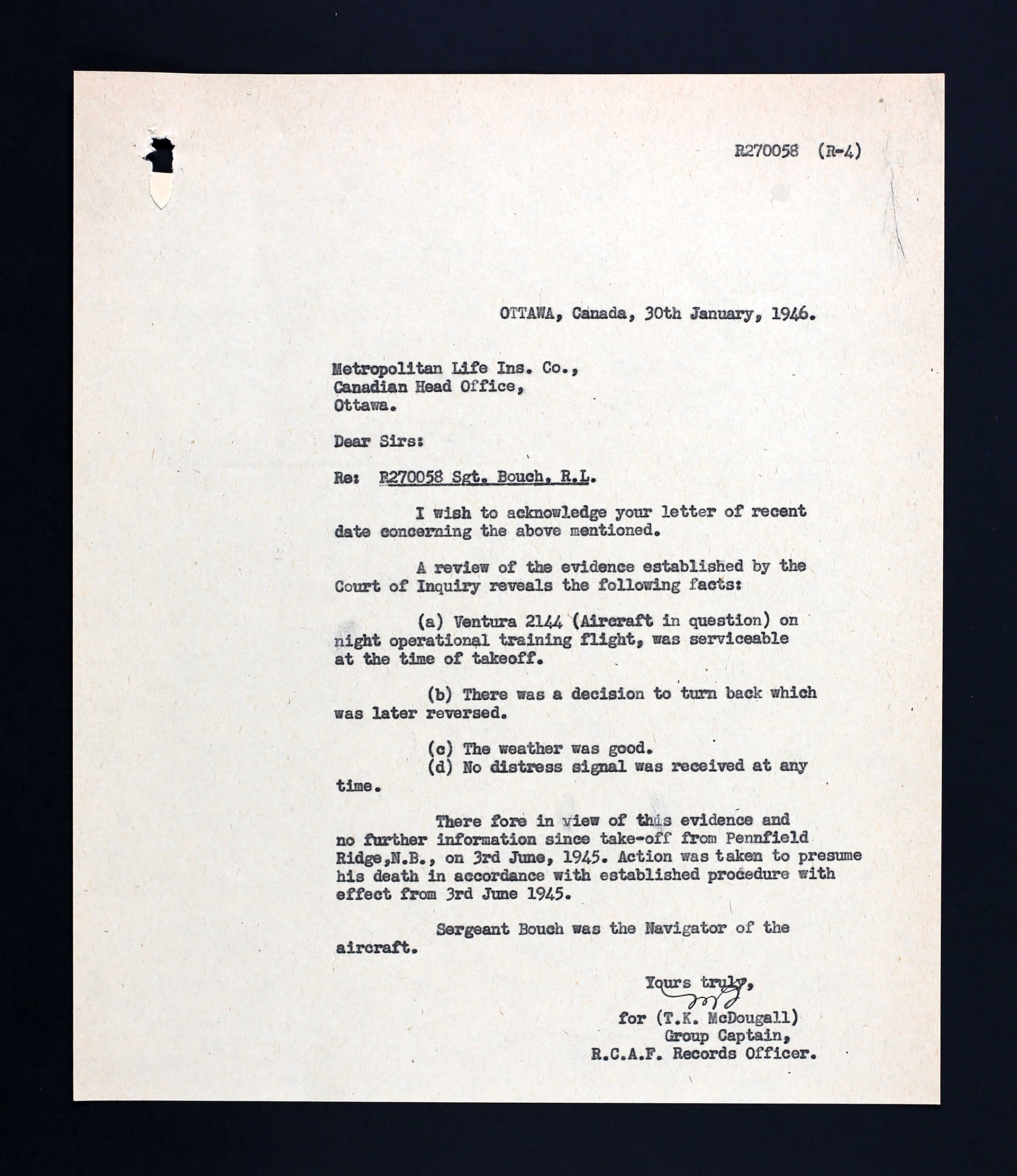
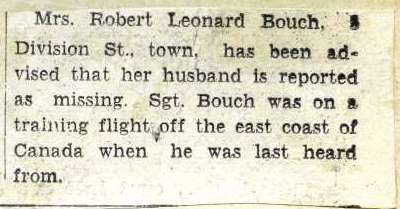

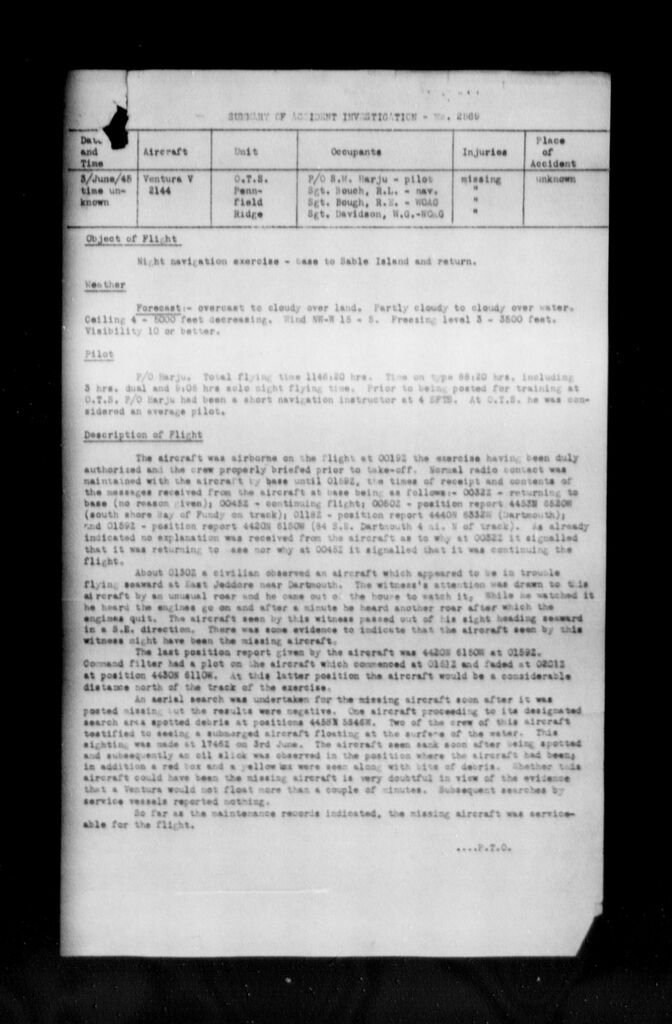
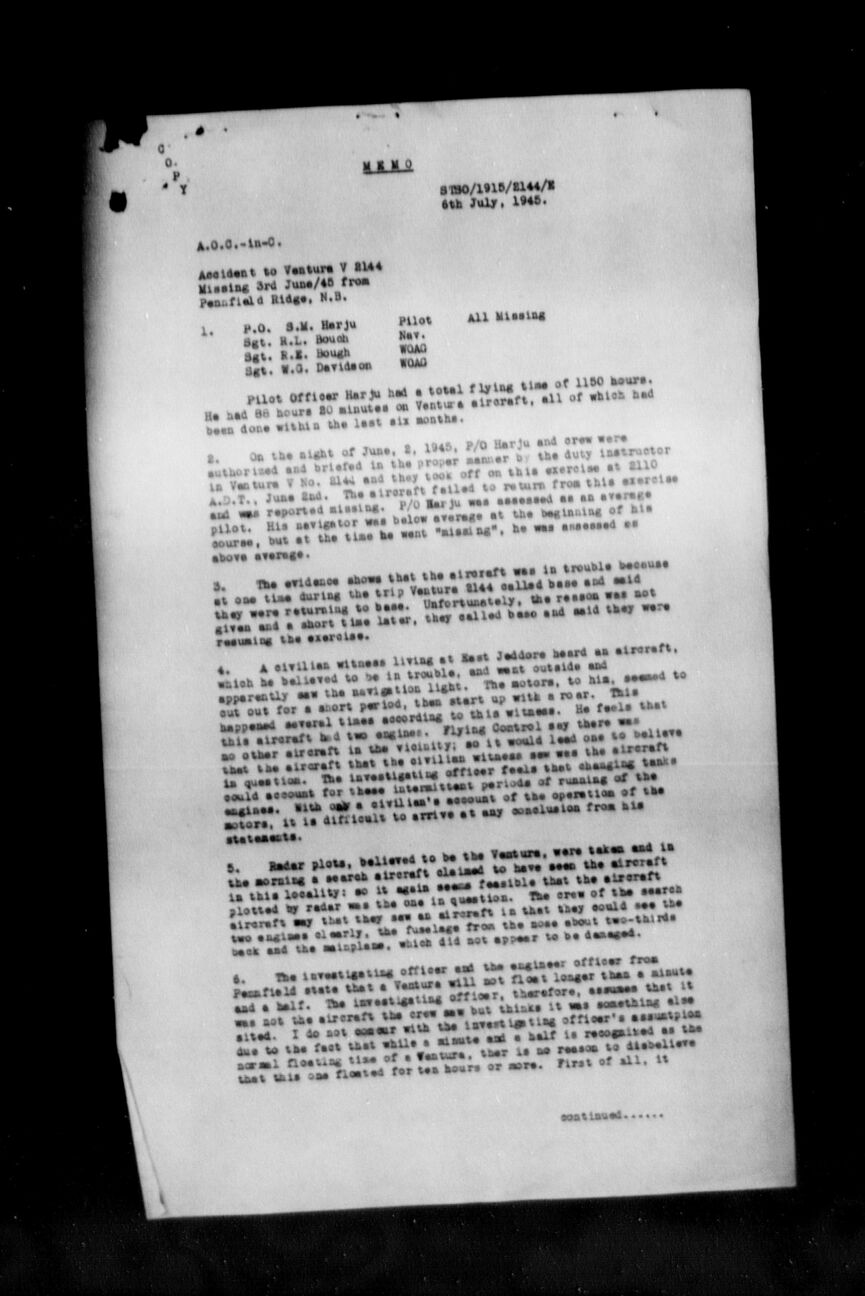
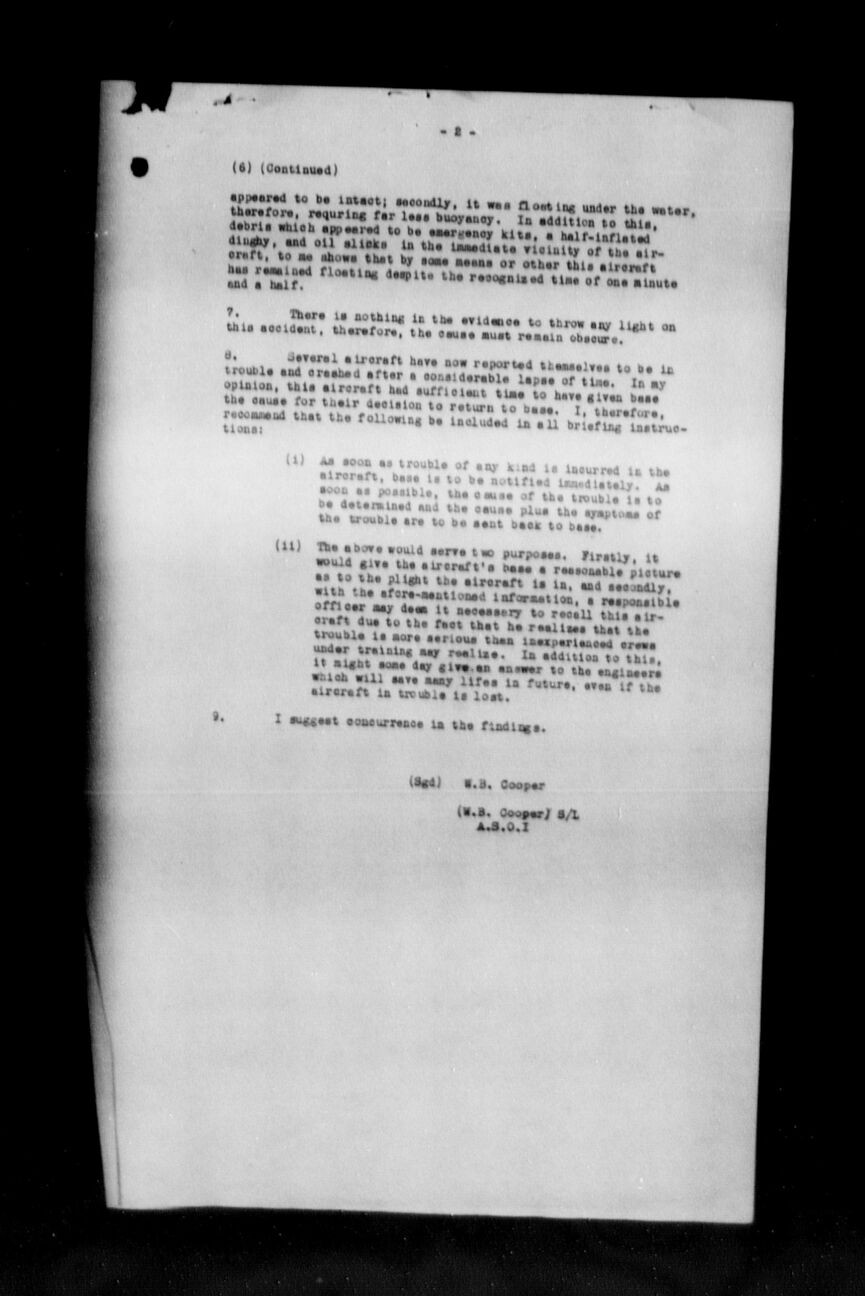
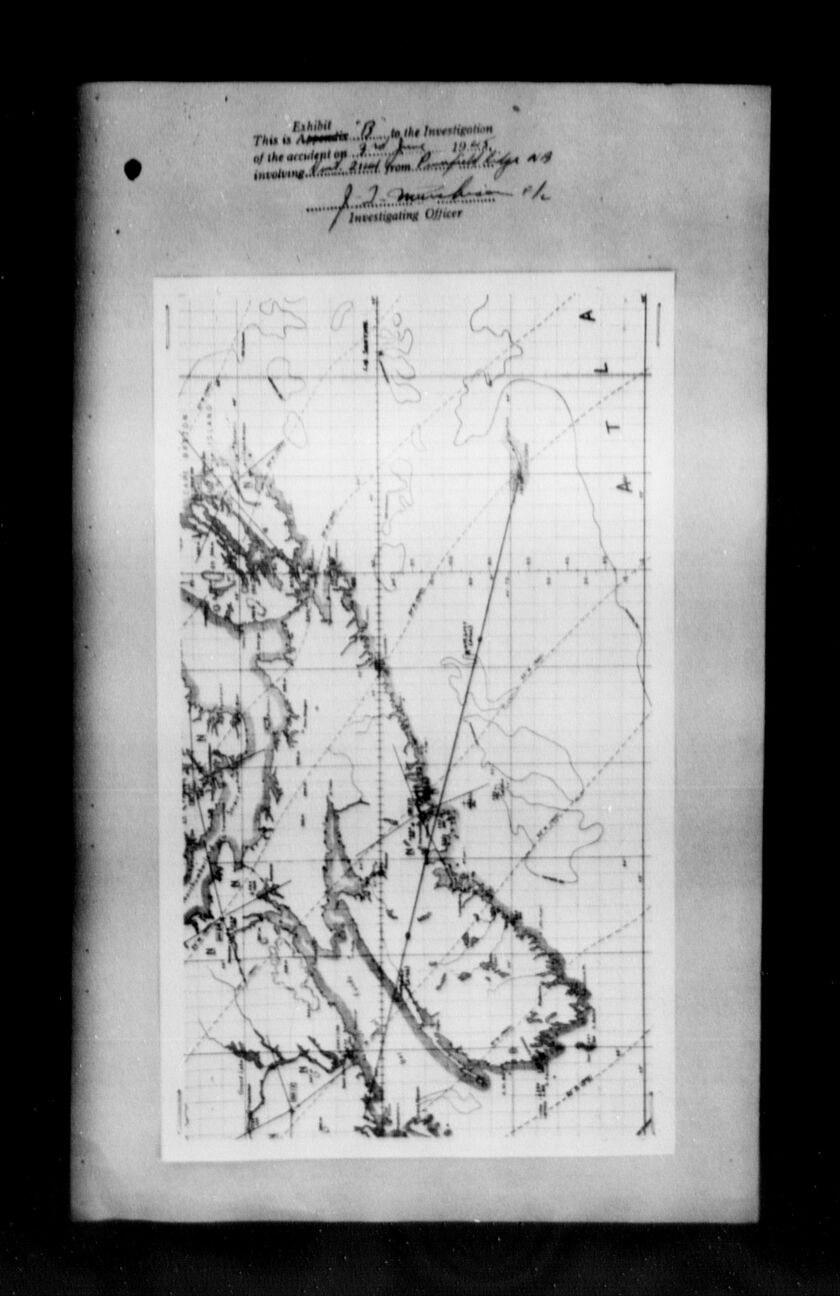
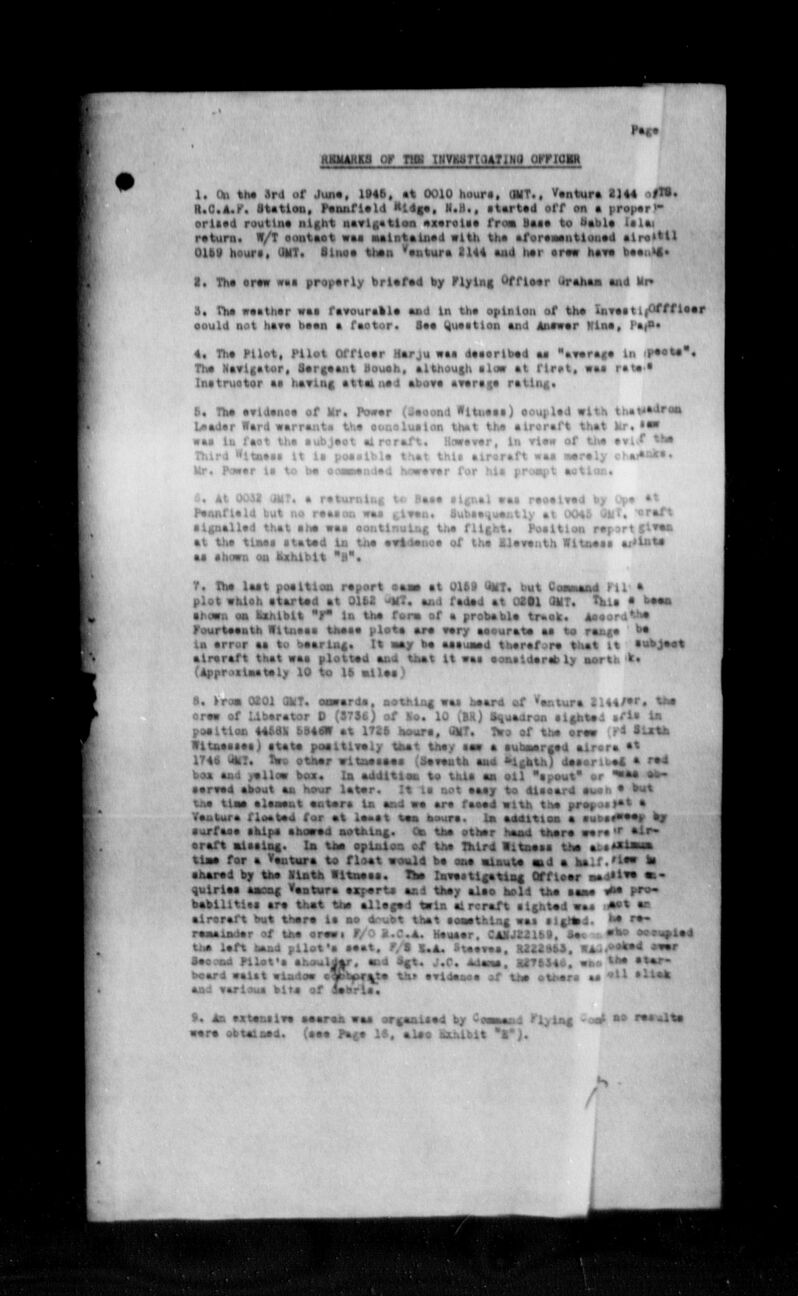
October 1, 1911 - June 3, 1945










Robert Leonard Bouch, born in Manchester, England, was the son of George Bouch, labourer, and Maude (nee Sargent) Bouch of Lindsay, Ontario. He had four brothers, Albert, Arthur, Harold, and Jack. Albert and Arthur lived in Manchester, England. He had one sister, Edith, also in Manchester; his sister Hilda, died at age 23, with another sister, dying at birth. Mrs. Bouch died of pneumonia prior to Robert’s enlistment. The family was Anglican.
Robert immigrated to Canada in 1938.
Robert had previous military experience for one week in October 1939 with the Queen’s Own Rifles in Toronto, but was considered medically unfit.
Robert married Mary Ada. They had one daughter, Sharon Ann Bouch, born on March 29, 1944.
Robert enlisted in Toronto on July 30, 1943. Prior, he was farming and working in a brass foundry, casting, for Dominion Arsenal. After the war, he hoped to work in flower gardens and greenhouses. He liked baseball, soccer, and cricket. He smoked 15 cigarettes a day and drank the occasional beer.
“Wiry, standard mentality. 5’6” tall, 134 pounds, had blue eyes and light brown hair. Childhood empyema from rib fracture operated on lower right ribs. Scar 5:. Rib resection apparently done.” Robert had partial upper dental plate and a lower bridge. “Intelligent workman. Alert, above average mentality. Good motivation. Suggest MSB examination of the eyes -- has diplopia [double vision] on close vision with poor OMB.”
Robert purchased a Victory Bound for his wife; also, he had $1,000 in life insurance, Mary the beneficiary.
His journey through the BCATP started at No. 5 Manning Depot, Lachine, Quebec, July 30-August 22, 1943. Then he was in Truro, NS at WETP, pre-aircrew education. “70%. Good man. Not very bright. Very industrious. Painfully slow.” He was then sent to Debert, Nova Scotia, then to No. 6 ITS, Toronto by November 1943. “Average type. Quiet. Mature. Sincere and works hard.”
Robert was then at Mountain View in March 1944 for a month before being sent to No. 10 AOS, Chatham, NB. “51 out of 100 in character and leadership. 72.6% in air work. 78% in ground work.” Bombing: “Routine navigator improved steadily as course progressed. Rather colourless in character. Stubborn. Not particularly bright but is a plodder. Class standing 16/22. Not recommended for commission. Airsick 1/41.” Here he received his Air Observer/Navigation badge on September 22, 1944.
From there, he was at Three Rivers, No. 3 AGTS October 1944, then sent to RCAF Station Pennfield Ridge, NB by December 1944.
No. 1 GRS and No. 1 RN, Summerside, PEI was his next destination by January 20, 1945. “70/7%. 16th in class of 17. “As a practical navigator, he is an average student. He is weak in visual signals. This is not helped by the fact that he is not very keen and at times inclined to be lazy. Recommended for future employment: Land based GR or torpedo bombers. This NCO will probably require considerable supervision and guidance. He has the ability to do a satisfactory job.”
Three months later, he was back in Pennfield Ridge, NB.
Ventura 2144 was on night operational training flight was serviceable at time of take-off. There was a decision to turn back which was later reversed. The weather was good, and no distress signal was received at any time. An accident occurred approximately 100 miles east of Halifax.
Crew aboard Ventura GRV 2144: • Sgt Robert Leonard Bouch, R270058, navigator • Sgt Roy Edward Bough, R180547 • F/Sgt William Gordon Davidson, R221311 • F/O Sulo Matt Harju, J24723
A Court of Inquiry was struck. Fourteen witnesses were called. [Full file of accident in reel T12342, starting at image 4285.]
OBJECT OF FLIGHT: Night navigation exercises. Bae to Sable Island and back. WEATHER: Forecast: overcast to cloudy over land. Partly cloudy to cloudy over water. Ceiling: 4-5000 feet decreasing. Wing NWW 15-5. Freezing level 3, 3500 feet. Visibility 10 or better. PILOT: F/O Harju total flying time 1146.20 hours. Time on type 88.20 hours, including 3 hours dual and 9:05 hours solo night flying time. Prior to being posted for training at OTS, P/O Harju had been a short navigation instructor at No. 4 SFTS. At OTS, he was considered an average pilot. DESCRIPTION OF FLIGHT: The aircraft was airborne on the flight at 00192, the exercise have been duly just authorized and the crew properly briefed prior to take off. Normal radio contact was maintained with the aircraft by base until 00192, the times of receipt and contents of the messages received from the aircraft at base being as follows: 00322 returning to base bracket no reason given bracket; 00452: continuing flight. [They were then over Dartmouth, then SE of Dartmouth.]
In a memo dated July 6, 1945: “P/O Harju was assessed as an average pilot. His navigator was below average at the beginning of his course, but at the time he went ‘missing,’ he was assessed as above average. The evidence shows that the aircraft was in trouble because at one time during the trip, Ventura 2144 called base and said they were returning to bas. Unfortunately, the reason was not give and a short time later, they called base and said they were resuming the exercise.
“As already indicated, no explanation was received from the aircraft as to why at 00322 it signalled that it was returning to base nor why at 00452 at signal that it was continuing the flight. About 01302, a civilian observed an aircraft which appeared to be in trouble flying seaward at East Jeddore near Dartmouth. The witness’s attention was drawn to this aircraft by an unusual roar and he came out of the house to watch it. While he watched it, he heard the engines go on and after a minute he heard another roar after which engines quit. Seated the aircraft seen by this witness passed out of his sight heading seaward in a southeast direction. There was some evidence to indicate that the aircraft was seen by this witness might have been the missing aircraft. At this latter position the aircraft would be a considerable distance north of the track of the exercise. An aerial search was undertaken for the missing aircraft soon after it was posted missing but the results were negative. One aircraft proceeding to its designated search area spotted debris period two of the crew of this aircraft testified to seeing a submerged aircraft floating at the surface of the water. This sighting was made at 17462 on the 3rd of June. The aircraft seen sank soon after being spotted and subsequently an oil slick was observed in the position where the aircraft had been. In addition, a red box and a yellow box were seen along with bits of debris. Whether this aircraft could have been the missing aircraft is very doubtful in view of the evidence that a Ventura would not float more than a couple of minutes. Subsequent searches by service vessels reported nothing. So far as the maintenance records indicated, the missing aircraft was serviceable for the flight.
“Flying Control said that there were no other aircraft in the vicinity, so it would lead one to believe that the aircraft that the civilian witness saw was the aircraft in question. The investigating officer feels that changing tanks could account for these intermittent periods of running of the engines…The crew of the search aircraft way that they saw an aircraft in that they would see the two engines clearly, the fuselage from the nose about 2/3 back and the mainplane, which did not appear to be damaged. The investigating officer and the engineer officer from Pennfield state that if insurer will not float longer than a minute and a half. The investigating officer, therefore, assumes that it was not the aircraft the crew saw but thinks it was something else cited. I do not concur with the investigating officer’s assumption due to the fact that while a minute and a half is recognized as the normal floating time of a Ventura, there is no reason to disbelieve that this one floated for 10 hours or more. First of all, it appeared to be intact; secondly, it was floating under the water therefore, requiring far less buoyancy. In addition to this, debris which appeared to be emergency kits, 1/2 inflated dinghy, oil slicks in the immediate vicinity of the aircraft, to me show that by some means or other this aircraft has remained floating despite the recognized time of one minute and a half. There is nothing in this evidence to throw any light on this accident, therefore the cause must remain obscure… several aircraft have now reported themselves to be in trouble and crashed after considerable lapse of time period in my opinion, this aircraft had sufficient time to have given base the cause for their decision to return to base. As soon as trouble of any kind is incurred in the aircraft, base is to be notified immediately. As soon as possible, the cause of the trouble is to be determined and the cause plus the symptoms of the trouble are to be sent back to base. The above would serve two purposes. Firstly, it would give the aircraft base a reasonable picture as to the plight the aircraft is in, and secondly with the aforementioned information, a responsible officer may deem it necessary to recall this aircraft due to the fact that he realises that the trouble is more serious than inexperienced crews under training may realize. In addition to this, it might someday give an answer to the engineers which will save many lives in the future, even if the aircraft in trouble is lost.” S/L W. B. Cooper, ASOI
G/C F. S. Wilkins, CI Accidents concurred.
Mary wrote on the estate form: “Dear Sir, I have filled this form out to the best of my knowledge and checked it out carefully. I am afraid I must return it at the present with page 4 unsigned, for I am unable to fill Question 10. Our minister who fully understands is away on vacation for the present. And owing to the size of our town, it puts me in rather an embarrassing position to have the declaration signed elsewhere. I trust you will quite understand my embarrassment at this time. Thanking you kindly. Sgt Bouch was insured with the Metropolitan Company for $1,000. And although he was presumed to have died on Active Service and in Canada, I, his beneficiary, only received the premiums paid in. I was wondering if this could be checked into. For he was not considered killed in a plane crash or outside of Canada. Personally, I am not familiar with insurance companies.”
Late in October 1955, Mr. Bouch received a letter informing him that his son had no known grave and Robert’s name would appear on the Ottawa Memorial.